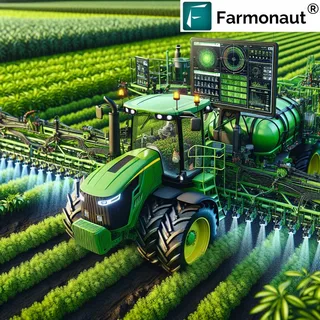In recent years, agriculture has undergone a technological revolution. As global food demand increases and arable land becomes scarcer, farmers are turning to precision agriculture and the future of automated farming machinery to improve efficiency, reduce waste, and boost productivity. This shift marks a significant transformation in how we grow, monitor, and harvest crops.
What Is Precision Agriculture?
Precision agriculture is a farming management concept that uses technology to observe, measure, and respond to variability in crops. By integrating GPS systems, sensors, drones, and data analytics, farmers can make real-time decisions based on detailed insights. This method leads to optimized use of inputs like water, fertilizers, and pesticides, ultimately enhancing crop yield and sustainability.
The Role of Automated Farming Machinery
Automated farming machinery, including self-driving tractors, robotic harvesters, and AI-driven irrigation systems, is becoming increasingly common on modern farms. These machines not only reduce the need for manual labor but also ensure consistent quality and timing in operations.
When paired with precision agriculture, these automated systems become even more powerful. For example, a GPS-guided tractor can follow an exact path to reduce overlapping or missed rows during planting, while drone data can instruct robotic sprayers to treat only the necessary areas of a field.
Benefits of This Technological Shift
The integration of precision agriculture and the future of automated farming machinery brings several key advantages:
- Increased Efficiency: Automation allows farmers to do more with less, completing tasks faster and more accurately.
- Environmental Sustainability: By applying resources only where needed, farms can reduce chemical runoff and conserve water.
- Cost Savings: Reduced labor and input costs can significantly increase profit margins.
- Data-Driven Decision-Making: Real-time insights help farmers respond quickly to crop stress, disease, or pest infestations.
Challenges and Considerations
Despite its potential, the widespread adoption of automated machinery and precision agriculture faces hurdles:
- High Initial Investment: Advanced machinery and software require significant capital.
- Training and Education: Farmers must learn how to operate and maintain complex systems.
- Connectivity Issues: In rural areas, limited internet access can hinder real-time data transmission and cloud-based analysis.
The Road Ahead
Looking forward, the evolution of precision agriculture and the future of automated farming machinery will continue to reshape the industry. As artificial intelligence, machine learning, and robotics advance, we can expect even smarter systems that require minimal human intervention.
Startups and large agricultural companies alike are investing heavily in research to develop scalable, affordable solutions. With governments and institutions also recognizing the importance of sustainable agriculture, supportive policies and funding are likely to further accelerate the adoption of these technologies.
Conclusion
Precision agriculture and the future of automated farming machinery represent a new era of farming that is smarter, faster, and more sustainable. While challenges remain, the benefits of these innovations are too significant to ignore. As we move forward, the fusion of data, automation, and intelligent systems will continue to transform agriculture, ensuring food security for generations to come.


